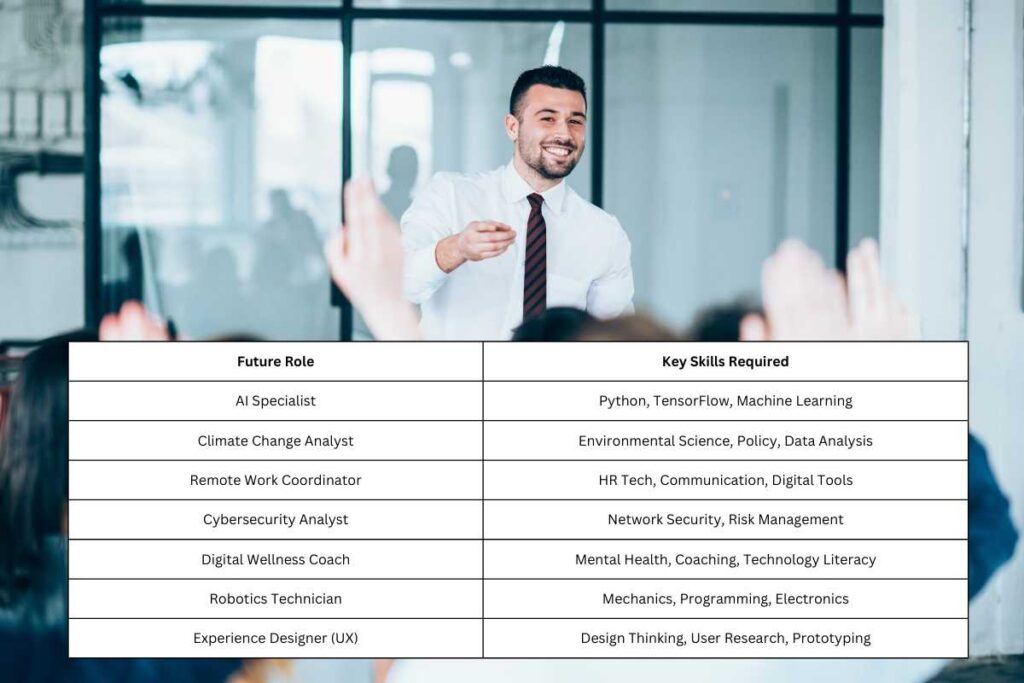The Workforce is Evolving, Are We Ready?
In today’s fast-paced digital economy, one truth stands above all: change is constant. From AI and automation to green energy and remote work, technological and societal shifts are redefining the world of work. Traditional career paths are disappearing, while new roles that didn’t exist a decade ago are becoming essential.
The skills that got us here won’t necessarily get us there.
In this evolving landscape, reskilling and upskilling are more than buzzwords; they are imperatives. Individuals, organizations, and governments must embrace lifelong learning as the cornerstone of a resilient, agile, and future-ready workforce.
This article dives into what reskilling and upskilling mean, why they matter, how to implement them effectively, and what they mean for the jobs of tomorrow.
I. Reskilling vs. Upskilling: Understanding the Difference
Before exploring strategies and benefits, let’s define the terms:
Reskilling
Learning new skills to transition into a different job or career, often because the current one is becoming obsolete.
Example: A factory worker learning coding to become a software tester.
Upskilling
Enhancing current skill sets to perform better in a current role or adapt to new technologies.
Example: A digital marketer learning data analytics or AI tools.
While the two overlap in purpose, enhancing employability, they serve different goals within workforce development.
II. Why the Reskilling and Upskilling Revolution is Urgent
1. Technological Disruption
- According to the World Economic Forum, 85 million jobs could be displaced by automation by 2025, but 97 million new roles may emerge.
- AI, robotics, and machine learning are replacing repetitive tasks but creating demand for creative, analytical, and interpersonal skills.

2. Changing Industry Needs
- Green economy, healthcare, cybersecurity, and digital commerce are rapidly growing fields with evolving skill demands.
- Roles like sustainability analyst, remote workforce manager, and AI ethicist didn’t exist a decade ago.
3. Workforce Demographics
- Aging populations in developed countries are leading to talent shortages.
- Gen Z and millennials prioritize flexible, meaningful careers, pushing companies to evolve and offer learning incentives.
4. Post-Pandemic Acceleration
- COVID-19 transformed remote work from a trend to a norm.
- Entire industries, from hospitality to logistics, had to pivot, highlighting the need for adaptive skill sets.
III. The Business Case: Why Companies Must Invest in Human Capital
Companies that embrace reskilling and upskilling:
- Boost Productivity: Skilled employees are more efficient and innovative.
- Enhance Retention: Learning and development (L&D) opportunities increase employee satisfaction.
- Stay Competitive: Organizations that adapt quickly to new technologies lead in market share.
- Reduce Recruitment Costs: It’s often cheaper to train existing employees than to hire new ones.
Case in Point:
AT&T invested over $1 billion in upskilling programs through its “Future Ready” initiative, helping over 100,000 employees transition into high-demand tech roles.
IV. Key Sectors Driving the Reskilling and Upskilling Agenda
1. Technology & IT
- Cloud computing, cybersecurity, DevOps, and AI are high-growth areas.
- Platforms like Coursera, Udacity, and Microsoft Learn offer certifications tailored to tech skills.
2. Healthcare
- The aging population and telemedicine boom require skills in health informatics, geriatric care, and virtual diagnostics.
3. Green Economy
- Roles in renewable energy, climate science, and sustainable design are booming.
- Certifications in energy auditing, environmental engineering, and ESG are increasingly sought after.
4. Finance and Fintech
- Blockchain, data-driven investing, and digital payments are reshaping financial roles.
- Upskilling in financial analytics, compliance, and crypto technologies is in demand.
V. How to Build a Future-Proof Learning Strategy
1. For Individuals: The Lifelong Learner’s Roadmap

- Self-Assessment: Identify transferable skills and interest areas.
- Set SMART Goals: Specific, Measurable, Achievable, Relevant, and Time-bound goals guide progress.
- Leverage Online Platforms: Coursera, LinkedIn Learning, edX, Skillshare, and Khan Academy offer scalable learning.
- Get Certified: Industry-recognized credentials can fast-track career pivots.
- Join Communities: Engage in peer-to-peer learning through forums, mentorships, and local meetups.
2. For Organizations: A Culture of Continuous Learning
- Skills Gap Analysis: Identify current versus future skill needs.
- Personalized L&D Programs: Offer customized learning paths based on roles and career trajectories.
- Internal Mobility Programs: Create pathways for employees to transition into new roles internally.
- Gamify Learning: Use leaderboards, badges, and interactive content to keep employees engaged.
- Track ROI: Monitor learning impact through performance metrics and business outcomes.
VI. Government and Policy-Level Interventions
Governments play a pivotal role in workforce transformation.
- National Reskilling Initiatives: Countries like Singapore and Germany have launched national upskilling campaigns with government funding and employer partnerships.
- Public-Private Partnerships: Collaborations between tech companies and governments are bringing digital literacy to underserved populations.
- Incentives for Employers: Tax breaks and subsidies for companies investing in workforce training.
- Micro-Credential Recognition: Encouraging flexible learning models and recognizing non-traditional qualifications.
VII. Success Stories: Real-World Transformations
1. Amazon’s “Upskilling 2025”
- A $1.2 billion commitment to train 300,000 employees for in-demand roles.
- Focused on cloud computing, machine learning, and data analysis.
2. Walmart’s “Live Better U” Program
- Offers affordable college degrees and career diplomas to associates.
- Partners with universities and online platforms for skills development.
3. IBM’s “SkillsBuild”
- Aimed at underserved communities, this platform provides free access to job-ready training in cybersecurity, AI, and soft skills.
VIII. Emerging Roles of the Future
As the economy evolves, so does the job market. Some jobs of tomorrow include:

| Future Role | Key Skills Required |
| AI Specialist | Python, TensorFlow, Machine Learning |
| Climate Change Analyst | Environmental Science, Policy, Data Analysis |
| Remote Work Coordinator | HR Tech, Communication, Digital Tools |
| Cybersecurity Analyst | Network Security, Risk Management |
| Digital Wellness Coach | Mental Health, Coaching, Technology Literacy |
| Robotics Technician | Mechanics, Programming, Electronics |
| Experience Designer (UX) | Design Thinking, User Research, Prototyping |
These roles emphasize interdisciplinary skill sets, blending technical, human, and creative competencies.
IX. Challenges in Reskilling and Upskilling
Despite its importance, the path to workforce transformation isn’t without hurdles:
- Time Constraints: Balancing learning with work and personal life can be tough.
- Cost Barriers: High-quality courses and certifications can be expensive.
- Resistance to Change: Some employees fear failure or feel intimidated by new technologies.
- Access Inequality: Marginalized communities may lack digital access and support systems.
Solution?
Employers and governments must design inclusive programs with flexibility, affordability, and strong support systems.
X. The Future of Work is Human + Machine
While automation may reduce some jobs, it also creates new opportunities. The key to success lies in collaboration between humans and machines. Reskilling and upskilling bridge that gap.
In this future:
- Soft skills like critical thinking, empathy, adaptability, and creativity become invaluable.
- Digital literacy is as foundational as reading and writing.
- Lifelong learning becomes a norm, not an exception.
Those who embrace continuous learning won’t just survive disruption, they’ll lead it.
Conclusion: Invest in People, Empower the Future
As the global economy reorients itself around digital transformation, sustainability, and resilience, reskilling and upskilling are no longer optional; they’re essential.
For individuals, it’s a path to relevance and opportunity.
For businesses, it’s the key to innovation and longevity.
For society, it’s a route to equity and economic stability.
In short, learning is the new earning.
It’s time to stop asking if we’ll be replaced by machines and start asking how we can work alongside them, learn faster than ever, and shape a future where talent and technology walk hand in hand.
